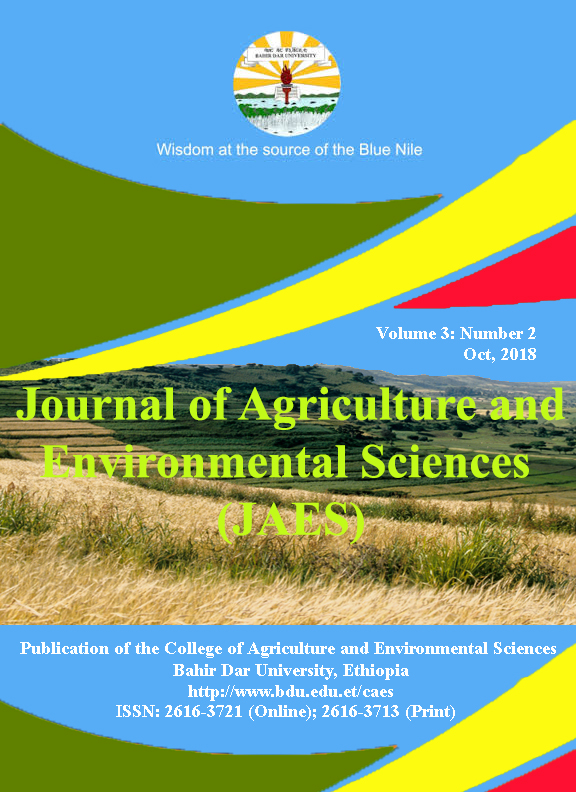Assessment of the Effect of Consumption of Lake Rice on Food Security of Households in Lagos State, Nigeria
Abstract
In Nigeria, food insecurity is still a critical challenge among rural and urban households. To enhance the country’s food security status, a novelty was introduced to the nation’s drive towards self-sufficiency in food production in 2016 when Lagos and Kebbi States launched the much-awaited Lagos-Kebbi Rice, christened LAKE RICE. Thus, this study assessed the effect of the consumption of Lake Rice on food security of households in Lagos state, Nigeria. Random sampling technique was used to pick 200 farming households for this study. The analytical tools include: descriptive statistics, likert scale, food security index and logistic regression. The result implied that majority of the sampled respondents were male with an average household size of 6 persons. The food insecure and secure households’ were 26% and 74% respectively when Lake Rice was consumed. On the other hand, the percentage of food insecure and secure households was 29.5% and 70.5% respectively when other rice was consumed. The result indicated that the introduction of Lake Rice has to certain extent reduced the food insecurity of households. This is probably because Lake Rice is readily accessible, available and highly consumed than other rice. The logistic regression suggested that age of the respondents, family size, income and amount of Lake Rice consumed were the critical determinants of food security among households. The most effective coping strategies adopted by the respondents are reduction in daily/monthly spending. The government should encourage the production of Lake Rice by given soft loans to farmers. Policies and strategies that reduce household size should be enthusiastically pursued to reduce food insecurity.References
Ahmed F.F., Eugene, C. E. and Abah, P. O. (2016). Analysis of food security among farming households in Borno State, Nigeria. Journal of Agricultural Economics, Environment and Social Sciences 1(1):130-141Akinsanmi A. and Doppler, W. (2005). Socio-economic and food security of farming families in Southeast Nigeria. Paper presented at Tropentary, 2005, Conference on international agricultural research and development, University of Honhentiem, Stuttgart, Germany.
Ali, R. O. (2018). The Effect of Sustainable Land Management Technologies on Farming Households’ Food Security in Kwara state, Nigeria (M.Sc. thesis). Kwara State University, Malete, Nigeria.
Amaza, P.S., Adejobi, A.O. and Fregene, T. (2008). Measurement and determinants of food insecurity Northeast Nigeria: Some empirical policy guidelines. Journal of Food, Agriculture and Environment, 6 (2): 92-96.
Babatunde, R.O. Omotesho, O. and Sholotan, O.S. (2007). Socio-economic characteristics and food security status of farming households in Kwara State, North-Central Nigeria. Pakistan Journal of Nutrition, 6, 49-58.
FAO, (2005). Food and agricultural organization. The state of food insecurity in the world, 2005, Rome, 2.
FAO, (2006). State of food insecurity in the World: Eradicating world hunger, taking stock ten years the World Food Summit. Rome, Italy.
National Population Commission (NPC)(2016). National population of Nigeria.
Nigerian Congress, (2005) - Administrative Division Description Archived 2005-12-25 at the Way back Machine.
Ifeoma, J. I., and Agwu, E.A (2014). Assessment of Food Security Situation among Farming Households in Rural Areas of Kano State, Nigeria. Journal of Central European Agriculture, 15(1): 94-107
Omonona, B., Agoi, T. and Adetokunbo, G. (2007). An analysis of food security situation among Nigerian urban households: Evidence from Lagos State, Nigeria. Journal of Central of European Agriculture. 8(3): 399-406.
Vanguard Newspaper, 10Th January, 2017.
Copyright (c) 2019 Journal of Agriculture and Environmental Sciences

This work is licensed under a Creative Commons Attribution-NonCommercial 4.0 International License.
Authors who publish with this journal agree to the following terms:
- Authors retain copyright and grant the journal right of first publication with the work simultaneously licensed under a Creative Commons Attribution License that allows others to share the work with an acknowledgement of the work's authorship and initial publication in this journal.
- Authors are able to enter into separate, additional contractual arrangements for the non-exclusive distribution of the journal's published version of the work (e.g., post it to an institutional repository or publish it in a book), with an acknowledgement of its initial publication in this journal.
Authors are permitted and encouraged to post their work online (e.g., in institutional repositories or on their website) prior to and during the submission process, as it can lead to productive exchanges, as well as earlier and greater citation of published work (See The Effect of Open Access).


